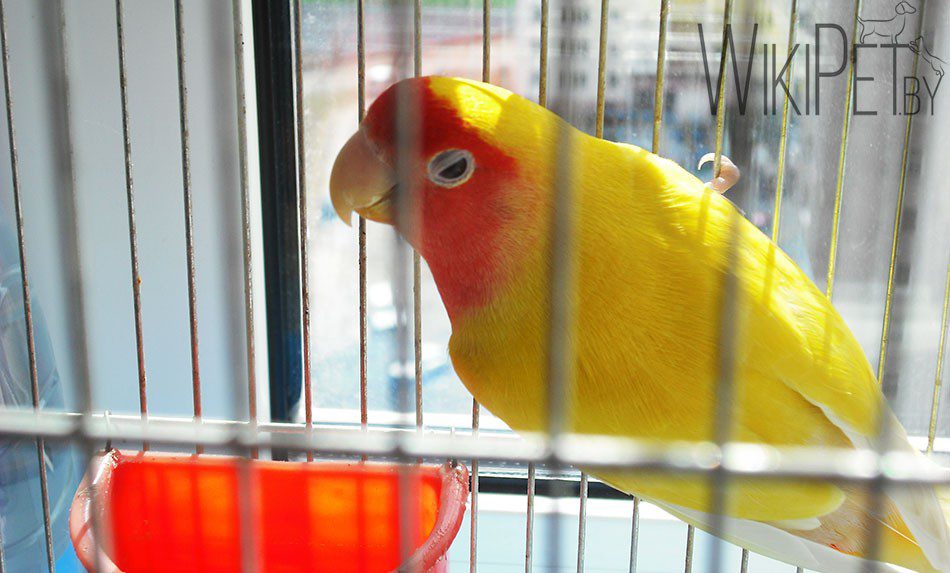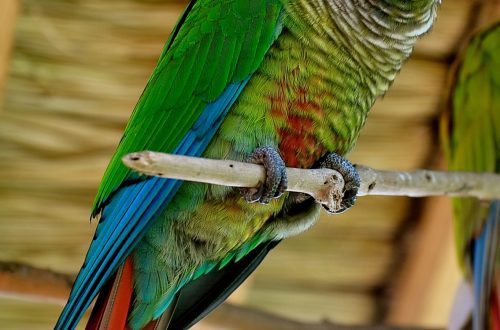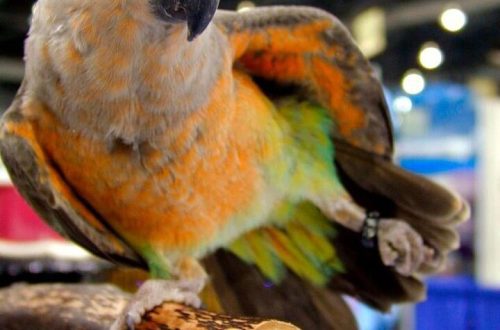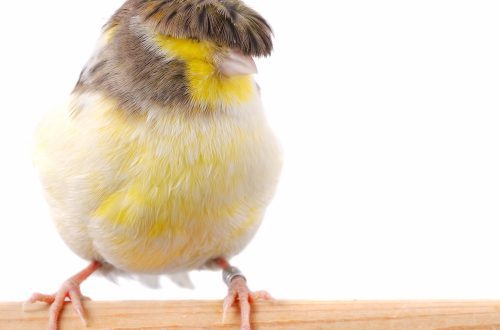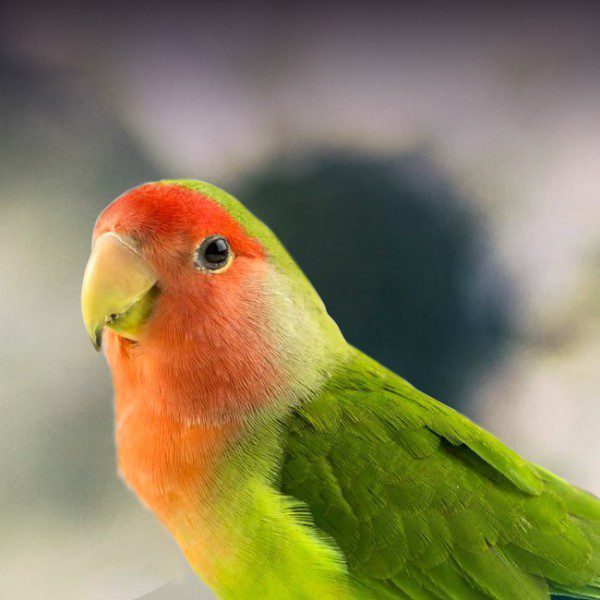
Lovebirds
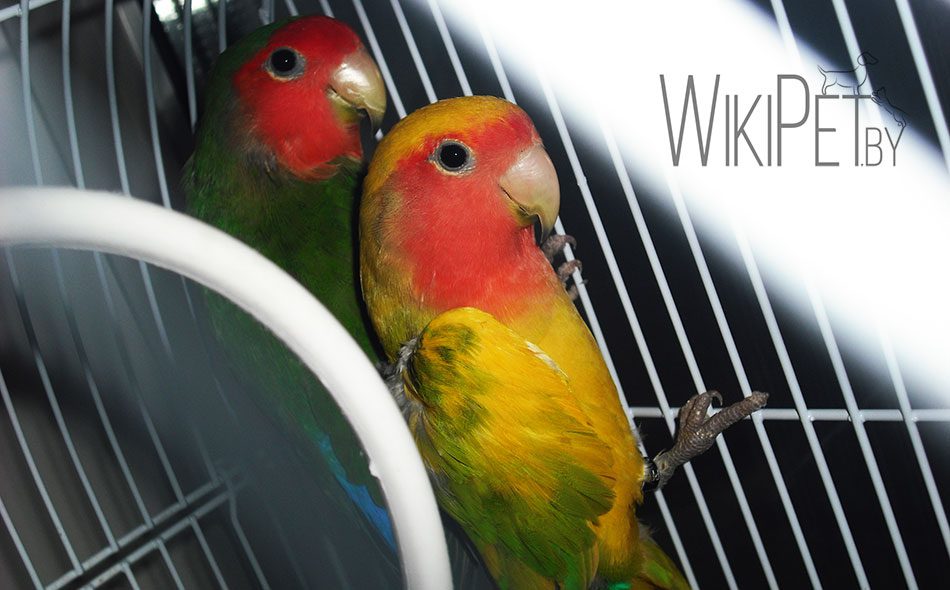 Lovebirds are one of the hardiest birds to keep in cages and aviaries, which is why they are very popular.
Lovebirds are one of the hardiest birds to keep in cages and aviaries, which is why they are very popular.
Content of lovebirds
Before you make yourself such a bright friend, study the literature, watch videos with these birds, hear the sounds that lovebirds make. Only after that, start looking for a feathered pet.
Remember that none of the types of lovebirds can be kept with other types of parrots in the same cage, they are quite aggressive and smaller or even larger birds can cripple or even kill. Even when walking these birds outside the cage, always cover the cages with other birds, as the lovebird can easily grab a gaping bird by the finger.
In Latin, the genus of lovebirds is called Agapornis, from the Greek “agapein”, which translates as “to love” and the Latin “ornis”, which translates as “bird”. And in English, the lovebird sounds like the Love Bird.
However, despite their name “Lovebird” these birds can live alone if they are given enough attention. And after the loss of a partner, they easily find contact with relatives and form a new pair.
Lovebirds are very different from budgerigars not only in appearance, but also in character. They can show aggression not only to relatives, but sometimes to humans, and even to the owner. You need to be prepared that you may encounter such a not very pleasant character trait of these beautiful parrots. In addition, lovebirds have a very weak ability to imitate human speech; especially talented birds can learn up to 10 words.
Often, lovebirds gnaw on wallpaper and furniture, so toys should be hung prudently in the cage, which these parrots are interested in with pleasure. These birds should not be housed in wooden cages. Lovebirds are not the cleanest parrots, so you will have to clean them often. Moreover, garbage and fruit remains will be scattered outside the cage. Among other things, the lovebirds have a rather sharp and loud voice.
The advantages of these parrots include their interesting behavior, bright colors, unpretentiousness in keeping, the ability to breed in captivity and huge selection opportunities.
For a pair of lovebirds, a cage with dimensions of 100/40/50 or more is suitable. Birds also feel great in aviaries, where there are the necessary opportunities for them to fly. Birds are very active and without the right exercise can become obese. The cage should not stand in direct sunlight and away from heaters, avoid drafts. Also, when keeping a very important factor is lighting, because the cage or aviary should be located in a well-lit room, you can also use UV lamps. When the weather is right, be sure to sunbathe the lovebirds, while not exposing the bird to the sun, but placing the cage somewhere in the shade, providing the birds with water.
Feeding the lovebirds
The basis of the diet for lovebirds in captivity is a grain mixture. It is practical to use ready-made industrial mixtures for medium parrots. Some manufacturers produce such mixtures specifically for African medium parrots. But remember that the food must be of high quality, packed in airtight packaging, without any impurities and musty smell. You can check the quality of the feed by sprouting. To do this, a small part of the grain must be placed in a humid environment or in the ground and wait until it germinates. If more than 90% has risen, then the grain is of high quality. It is also possible to mix the grains yourself, but, again, be mindful of the quality of the grain. In addition to grain feed, green feed, fruits, vegetables, and berries must be present in the diet.
Animal products outside of the breeding season are best avoided as they can cause sexual behavior, obesity and liver stress in birds. Green food is dandelions, various wild cereals, shepherd’s purse, germinated cereals, wood lice, clover, etc. Be sure to treat your lovebirds with branches of fruit trees and some other trees (birch, linden, willow). From fruits and vegetables, you can almost everything that happens on your table, except for persimmons, potatoes, avocados and herbs. Seasonal berries should also be included in the diet. The cage should have a separate feeder with a mineral mixture, chalk and sepia. We also do not forget about clean water, which should be constantly available to birds.
Breeding lovebirds
Despite the fact that these types of parrots are kept quite often in captivity, breeding these parrots can cause some difficulties. Parrots for breeding must be absolutely healthy and molted, the allowable age is from one year. The birds don’t have to be related. Before breeding, you need to prepare a suitable house for this, 15/15 in size, 25 cm high and with a notch diameter of 5-7 cm. 2 weeks before hanging the bird house, you need to start preparing for nesting. To do this, we gradually artificially increase daylight hours, diversify the diet with feed of animal origin (egg-carrot mixture) and germinated grain, as it contains a lot of vitamin E, which stimulates parrots to reproduce. Grain feed in the diet should be slightly reduced, but vegetables, fruits and greens should be left in the same volume.
To build a nest, birds are offered thin twigs of willow or birch, previously soaked and scalded with boiling water. Usually, the female inserts these branches between the feathers above the tail and drags them into the nest, where she lays them in a layer up to 8 cm. A very important condition for breeding lovebirds is to maintain the desired humidity in the nest, since the development of eggs and chicks depends on this parameter. Due to too dry air, the shell of the eggs can form very thick and the chicks will not be able to break it when they hatch. If the house is dry, there are several ways to keep the nest moist. Before installing the house, a second bottom is made in it and holes are drilled between the first and second. A container with water is placed on the second bottom. The second option is to drip a few drops of water into the corners of the nest box daily, however some birds may be nervous about this procedure and drop the clutch. You can also offer the bird to bathe more often so that it itself brings moisture to the nest on its feathers.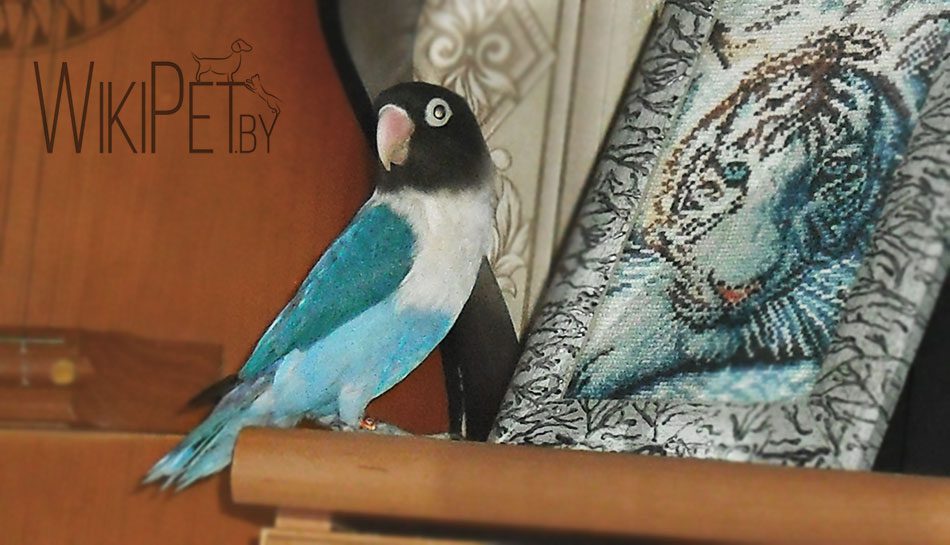
In general, lovebirds are very good parents, sometimes some females are difficult to stop after laying, they want to hatch chicks all year round, but the body’s strength is not unlimited.
Before laying the first egg, the birds need to reduce the greens in the diet, leave the egg mixture, grain, some fruit and branches. After the appearance of the first egg, it is necessary to remove the egg mixture from the diet, and leave only grain and germinated cereals. After the appearance of the first chick, the egg mixture should again appear in the diet, then cereals boiled in water, and fruits.
After the chicks leave the nest for some time, the parents feed them, but when the time comes for the second clutch, the chicks need to be removed. Be sure to make sure that all the chicks are already eating on their own by this time. To prevent the birds from gathering on the third clutch, before the chicks leave the nest, the birds need to start shortening the daylight hours. And as soon as the last chick leaves the nest, the house must be removed. Remember that with one clutch, the birds need to rest for at least six months, with two clutches in a row, the birds should rest for a year.
Sometimes love arises between different types of lovebirds and birds breed. At the same time, hybrids between masked and Fisher’s lovebirds may later have offspring, but hybrids of the same species with the pink-cheeked lovebird will be sterile and will not be able to breed chicks.
It follows from the above that it is not so difficult to keep these bright parrots, it is enough to create the minimum conditions necessary for any parrots and for a long time (up to 15 years) they can please you with their presence and cheerful chirping.



